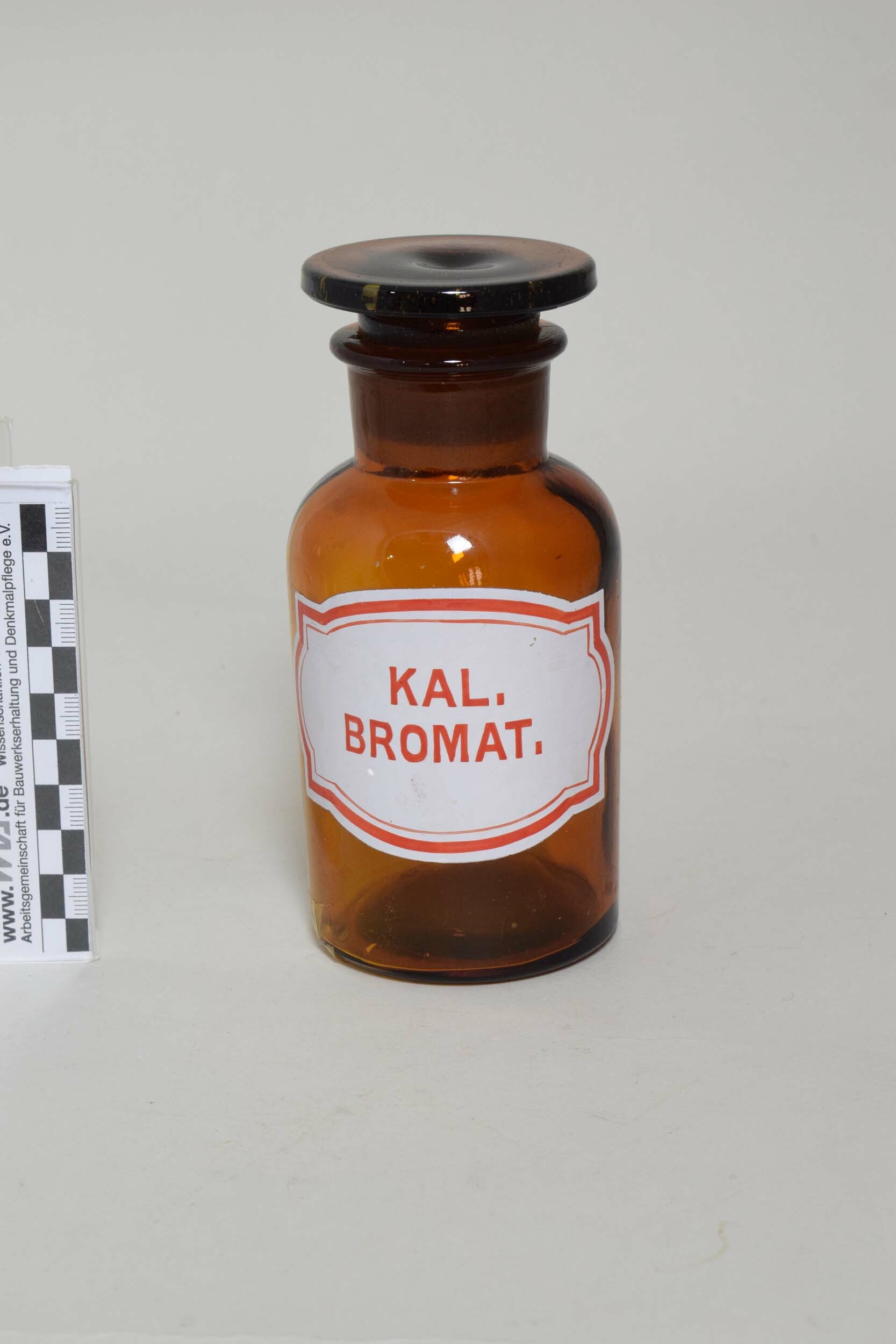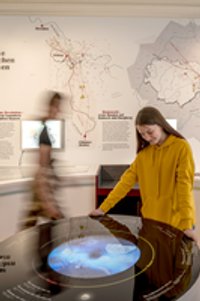Die zylindrische Apothekenflasche aus braunem Glas hat eine runde flache Schulter und einen kurzen Hals, in dem ein Schliffstopfen mit einem scheibenförmigen Abschluss sitzt. Das Glas trägt die rote Aufschrift auf weißem Grund "KAL. BROMAT." (Kaliumbromat). Die rote Schrift hat Signalwirkung und ist als Warnung vor einer giftigen Substanz zu verstehen. Rote Schrift auf weißem Grund hieß, dass der Inhalt gesondert und vorsichtig zu lagern sei.
Kaliumbromat ist das Kaliumsalz der Bromsäure, ein weißes, kristallines Pulver. Es wird als Urtitersubstanz für die Bestimmung von Arsen, Antimon und Zinn verwendet. Kaliumbromat wird unter anderem als Laborchemikalie und als Oxidationsmittel in Haarprodukten verwendet. (Quelle: https://www.internetchemie.info/stoffdaten/index.php?Datei=Kaliumbromat)
en

